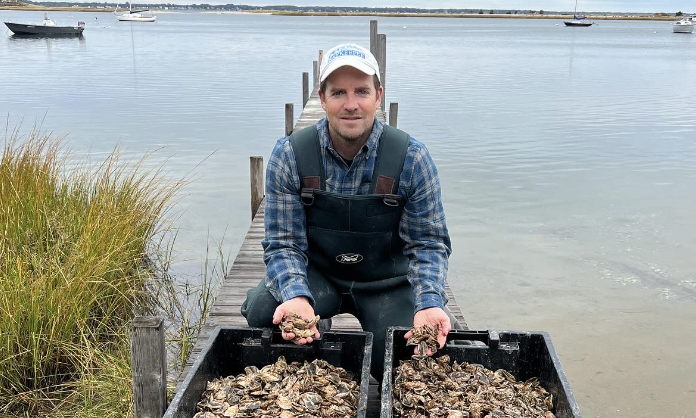Who Is Waterkeeper: Pete Topping, Peconic Baykeeper
By: Thomas Hynes

If New York’s Long Island is shaped like a fish, then the Peconic Bay and estuary are the space between the tail fins. The waterbody separates the north and south forks at the far eastern end of the island in Suffolk County. The area is perhaps known best for its beach communities which are collectively referred to as the Hamptons. These beachfront towns are a very popular seasonal tourist destination for those living in the New York City region. However, there are just as many if not more vibrant year-round communities with their own rich local histories.
Peconic Baykeeper Pete Topping has lived year round in this area for most of his life. His family has been in the county for a long time, long before it was called Suffolk County, and long before it was even called the United States. His father’s family first moved to the area in 1650, which was about ten years after the first Europeans arrived to the far end of Long Island.
As a kid, Pete’s mom worked nearby at Long Island University’s Southampton College. Whenever she was working, he would inevitably meander down to campus and find his way into the marine science lab. When the time came, he attended that college, but he may have been the only one in his classes who knew the professors on a first name basis since the age of seven.
Pete also grew up near Peconic Bay, about a quarter mile away, in fact. One summer, there were brown tides caused by algal blooms. The water went from crystal clean to looking like coffee.
“I was always fascinated by the water. I was just learning how to swim and put on a mask,” says Pete.” Seeing that something was wrong with this amazing environment that I was just learning to explore. I had such a visceral reaction.”
After college, Pete researched coral reef ecology in Hawaii and led outdoor environmental education programs in California. Work has also brought Pete to the Florida Keys and Acadia National Park in Maine.
“I’ve never necessarily been one driven by profit or prosperity,” says Pete. “But I have always had a water view.”
Eventually, Pete found his way back home to Long Island, where, if you can believe it, he worked on the water. Specifically, he worked as a bay management specialist for the town of East Hampton’s shellfish hatchery. When he met the former executive director of Peconic Baykeeper, he was immediately intrigued. Pete was sure to mention that he would love to know if they were ever looking for someone. A year later they were. Pete quickly read the job description and knew it would be a perfect fit.
Peconic Baykeeper has been protecting this estuary since 1998, which predates the founding of Waterkeeper Alliance. Once the alliance was founded, however, Peconic Baykeeper was one of the earliest groups to join. The area has historically been known for its shellfish, its dynamic weather, and its beaches. Today, the beaches are the overwhelming draw as New Yorkers flock in droves to the Hamptons for the warmer months, which is both an opportunity and a challenge.
“We have a huge and very valuable second homeowner community out here. It’s people with a lot of money and want everything just right, and that includes a perfect lawn, and having no vegetative buffer,” says Pete. “You also have a landscape industry which is essentially incentivized to put more fertilizer down and get paid per application without any regulations. It’s a very challenging thing. We get a lot of folks who are new who just don’t know better. There’s a constant need to educate.”
Harmful algal blooms are made worse by Long Island’s legacy of poor wastewater infrastructure with most homes in the watershed being served by conventional septic systems. The soil, which is mostly sand, has a porous composition that does a poor job of keeping nutrients like nitrogen out of the water. It can lead to thousands of dead fish and contaminated shellfish. Like everywhere else in the world, Pete is also dealing with climate change. There are a lot of threats, a lot that keeps him up at night. But there has also been a tremendous amount of improvement in the estuary. That turnaround manifests in a number of ways, though it is most visibly in the form of wildlife, and not just the clams and other shellfish Pete likes to gather for his family.
“That’s been a huge success here. When I was a kid I never saw a dolphin. I never saw a whale at the beach. I never even saw a whale on a whale watching tour,” says Pete. “Now, I can’t remember the last time I was at the beach during the summer and I didn’t see a whale, or a shark, or a bluefin tuna, or dolphins, or seals. It’s been amazing. If you put meaningful regulations in place, and let nature do its thing, it really will come back together.”
There’s a chance Pete could see marine wildlife from his office, too. He’s got a view of the water.